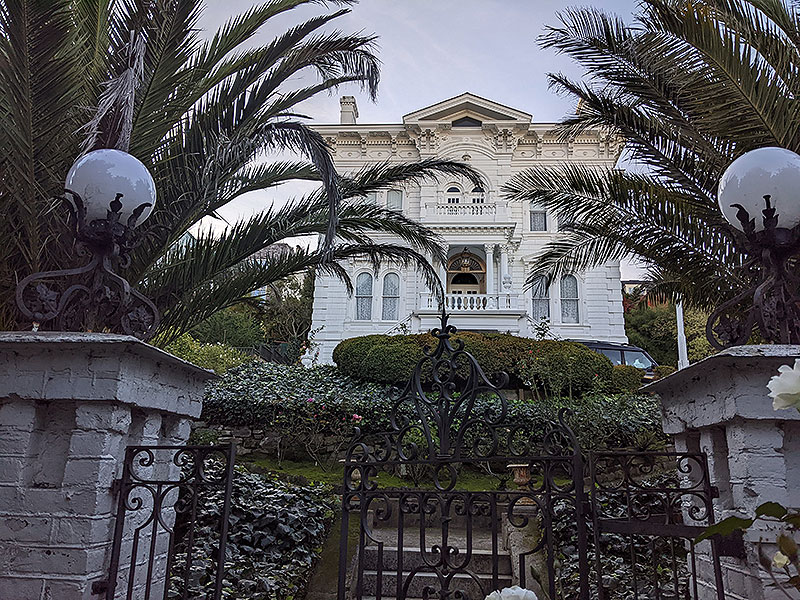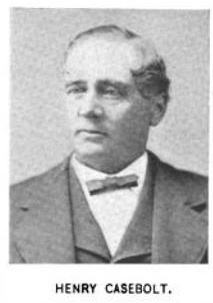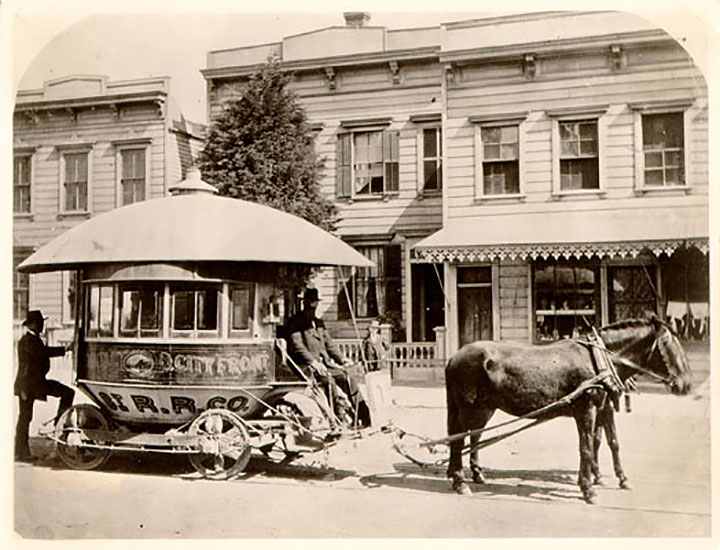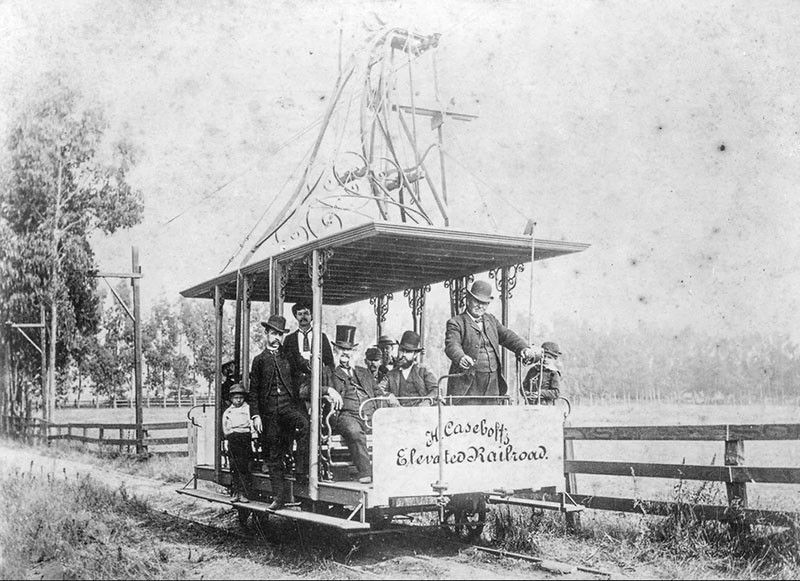Henry Casebolt, Transit Inventor
Unfinished History
This is the original Casebolt Mansion at 2727 Pierce Street. When it was built in the 1860s Pierce Street was a dirt path descending to Washerwoman's Lagoon.
Photo: Chris Carlsson
From the May, 1895 Street Railway Journal, page 312:
Henry Casebolt, one of the pioneers of cable railways, was born in Virginia in 1816, and moved to California in 1852. He was an incorporator of the Front Street, Mission Street & Ocean Railway Company, which was chartered in 1873. This was one of the earliest lines in San Francisco, and the predecessor of the Sutter Street Railway Company.
As soon as the cable had proved successful on the Clay Street line Mr. Casebolt determined to introduce his system on the Sutter Street line, and planned and engineered the entire work. In the course of this work he invented a number of appliances which brought about marked economy. For these improvements he took out a number of patents.
Mr. Casebolt died September 23, 1892.
courtesy Cable Car Guy website.
The Balloon car, one of several designs invented by Henry Casebolt that never gained popularity.
Photo: San Francisco History Center, SF Public Library
MR. CASEBOLT'S OVERHEAD CABLE CAR on Moraga Avenue between Bonita and Highland Avenues. This was an experimental narrow gauge electric car designed to supplant the cable car and was used for a time near the high end of Moraga because it was the steepest part of the cable car run. Behind Driver Casebolt whose innovation was shortlived, is Montgomery Howe in the top hat and beside him is Walter Blair, Piedmont's first resident. At the rear, wearing a straw hat, is Mark Requa. The other men are unidentified and solemn as well they might be for both Casebolt and Howe went broke trying to finance an East Bay transportation system. The young lad at the left is Charles Miller who became an Oakland realtor. We don't know what ever became of the boy at the right.
Photo: History of Piedmont website




